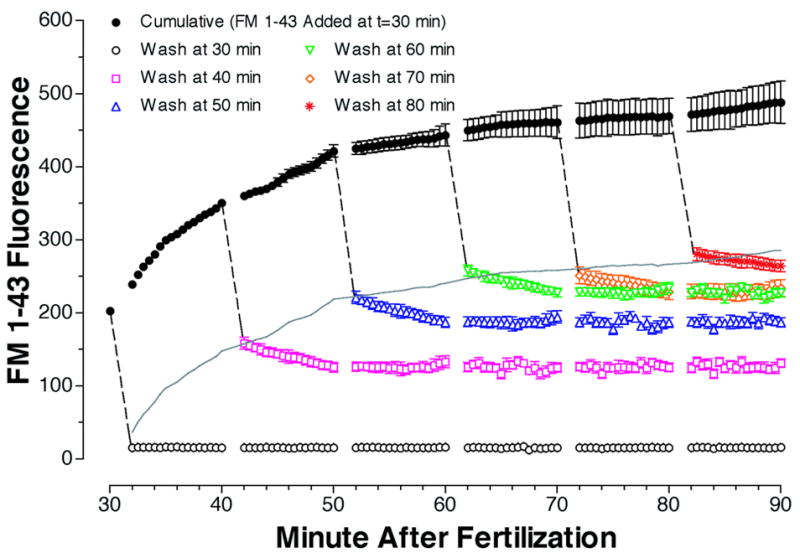Figure 2.

Recycling of internalized FM1-43. Sea urchin eggs (Lytechinus variegatus) were fertilized with sperm in a single pool and kept at room temperature. 30 min after fertilization FM1-43 was added to a final concentration of 4 μM. Samples were immediately removed to determine the time course of cumulative FM1-43 fluorescence (BLACK filled circles). Another set of samples was diluted 7 fold with artificial seawater, microfuged for 4 seconds, resuspended in ASW (final dilution of FM1-43 = 1400 fold) and placed in microtiter dish wells to determine non-dissociated fluorescence (BLACK open circles). Readings were taken at 30-second intervals beginning 2 minutes after washing. Other samples were washed and fluorescence determined in the same manner at 10 min intervals after adding FM1-43 (i.e. RED squares, BLUE triangles, etc.). The rapid decrease in fluorescence upon dilution of FM1-43 (dashed black lines) should be proportional to embryo surface area. Grey line estimates the fraction of the cumulative FM1-43 fluorescence originating from internalized FM1-43 (cumulative FM1-43 fluorescence minus embryo surface fluorescence). All points are mean ± SEM, n=3.
